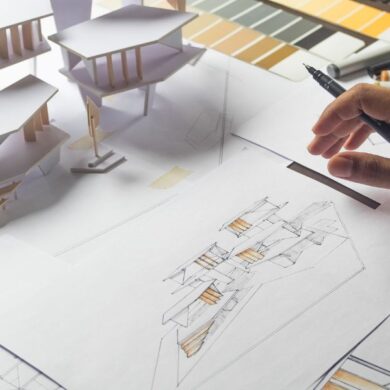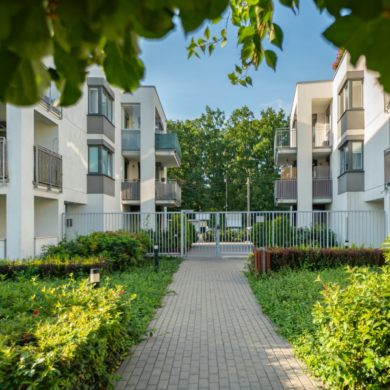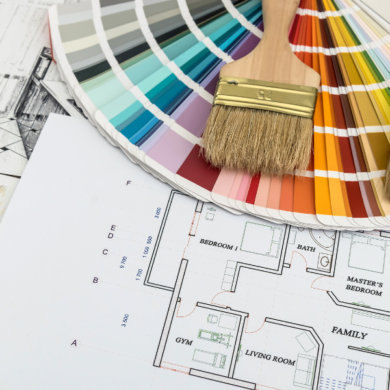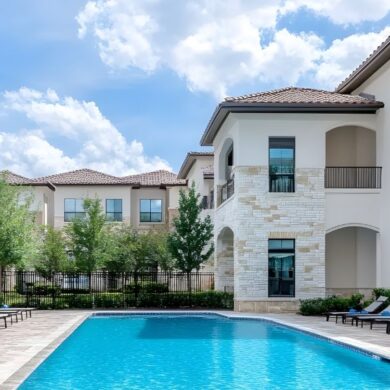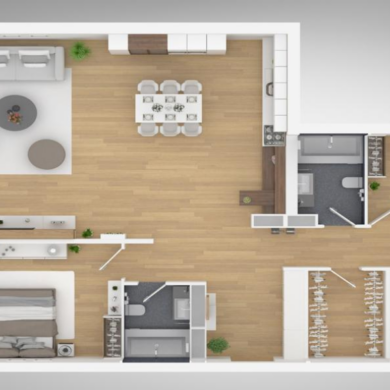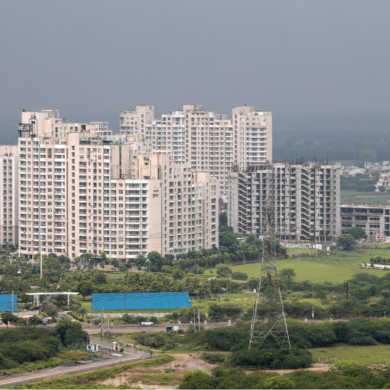Contemporary vs Traditional Architecture 2025: Choosing the Perfect Style for Your Luxury Home
October 30th, 2025

Explore contemporary vs traditional luxury home architecture to choose your next perfect housing investment.
Every premium home carries a unique identity that defines its appearance, comfort, and emotional impact. The concept of architectural structure goes beyond design – it shapes how residents experience space, light, and luxury. A home’s style also influences long-term property value and appreciation, making it a vital part of luxury real estate decisions. Over the decades, Indian homes have witnessed diverse trends – from heritage-inspired layouts to sleek, minimal, and functional spaces.
In this evolution, modern vs classic architectural styles India form the foundation of today’s design philosophy. As 2025 comes to an end, the market continues to witness a strong preference for hybrid or fusion forms, where tradition intersects with innovation.
This equilibrium connects the emotional warmth of culture with the efficiency of modern architecture, allowing homeowners to experience the best of both contemporary vs traditional luxury home architecture.
Table of Contents
Contemporary Architecture: The Modern Luxury Statement
Rooted in mid-20th-century modernism, this approach stands out for clarity of form, functional aesthetics, and focus on purposeful simplicity. It values geometry, open-plan layouts, and strategic use of glass, concrete, steel to maximise natural light and spatial flexibility.
Neutral colour palettes – greys, whites, and earthy undertones – dominate these homes, creating balance and visual calm. The advantages of contemporary vs traditional luxury home architecture lie in energy efficiency, adaptability, and strong appeal among younger buyers.
However, maintenance of glass facades and energy efficiency may pose challenges. Despite this, the model remains an aspirational choice for those drawn to innovation and refined minimalism. Today, it symbolises the evolving preferences of choosing architectural style luxury home across India.
Traditional Architecture: Timeless Elegance and Heritage
This represents legacy and grandeur – inspired by palatial, temple, or colonial styles. These homes emphasise intricate ornamentation, columned verandas, carved woodwork, arches, and richly textured facades.
Materials such as sandstone, brick, and teak wood enhance their authenticity. Colour palettes are warm – featuring ochre, terracotta, ivory, and deep brown tones that evoke familiarity and comfort.
While assessing contemporary vs traditional luxury home architecture, the pros of traditional design include timeless aesthetic appeal, high cultural value, and strong resale potential among heritage-driven buyers. Limitations stem from rigid layouts, higher construction effort, and reduced flexibility for integrating modern features.
Yet, the emotional connection and craftsmanship continue to attract discerning homeowners who value artistry and identity over trends, while exploring traditional vs contemporary design luxury houses for personal or generational homes.
Regional Traditional Styles in India
The country’s vast diversity in geography and cultures has shaped unique design philosophies, making the discussion between contemporary vs traditional luxury home architecture significant. In the south, states like Kerala and Tamil Nadu showcase tropical sensitivity through traditional homes with sloping tiled roofs, deep verandas, and open courtyards – features that ensure natural ventilation and protection from heavy rainfall while preserving cultural identity.
Traditional details continue to inspire modern residences, influencing the design of luxury apartments in Gurgaon – where grand facades and intricate detailing reinterpret regal aesthetics in a contemporary urban form.
Materials such as laterite stone and timber add warmth, while keeping interiors cool.
Rajasthani and Mughal-inspired designs, seen in northern and western India, express grandeur through domes, Jharokhas, intricate Jali screens, and marble or sandstone facades.
Courtyards and shaded corridors not only enhance airflow but also add visual depth – key aspects often contrasted in contemporary vs traditional luxury home architecture. In eastern India, Bengali bungalows highlight this heritage with pitched roofs, wooden balustrades, and spacious verandas suited to monsoon climates – while their symmetry and pastel tones echo colonial-era refinement.
In the North-East, architecture reflects deep harmony with nature. Bamboo, cane, and timber dominate construction, offering lightness and flexibility suited to seismic zones. Elevated stilt houses protect against floods and enhance air circulation, while sloped roofs efficiently manage heavy rainfall – showcasing a sustainable response rooted in regional ecology and craftsmanship.
Goan Portuguese architecture merges European flair with coastal practicality – arched doorways, pastel walls, and red-tiled roofs evoke a seaside charm. Collectively, these regional traditions shape some of the best architectural styles for luxury houses in India, offering culturally rich alternatives to modern structures.
Fusion Architecture: Trends of 2025-26
This style unites timeless aesthetics with modern engineering. Going beyond contemporary vs traditional luxury home architecture, it reflects adaptability and innovation.
2025-26 trends focus on combining carved wooden screens, classical arches, or stone finishes with glass walls, flat roofs, and open layouts. This blend appeals to modern buyers who seek comfort, sustainability, and visual identity in equal measure.
The principle of fusion design lies in balance – preserving nostalgia while enabling technology and energy efficiency. It stands as the future of contemporary vs traditional design in luxury real estate, bridging India’s glorious architectural past with rapidly evolving lifestyles.
SOBHA’s Architectural Excellence: Showcasing Both Styles
The company exemplifies architectural mastery through a portfolio that celebrates diversity, precision, and heritage. Each development reflects an intelligent synthesis of contemporary vs traditional luxury home architecture, demonstrating how design philosophies from different eras and regions can coexist within one cohesive vision.
Projects range from homes inspired by classical European architecture reinterpreted with contemporary designs, to Mediterranean-style residences that offer modern sophistication. These spaces capture the warmth and artistry of tradition, while integrating the comfort and modernity expected in contemporary lifestyles.
SOBHA’s developments highlight a forward-looking design language – defined by well-designed floor plans, expansive layouts, and large balconies that embrace natural light and coastal or city views. Each structure embodies the essence of contemporary vs traditional luxury home architecture – showcasing refined proportions, thoughtful geometry, and seamless spatial flow.
The company demonstrates how architectural design can transcend mere aesthetics to create living environments that inspire, endure, and enrich. This harmony between innovation and legacy continues to define luxury home architecture styles 2025, positioning SOBHA as a benchmark for excellence and enduring elegance in Indian real estate.
| Aspect | Contemporary Architecture |
Traditional Architecture
|
|
Visual Appeal and Aesthetics
|
Minimal, geometric, sleek |
Ornate, detailed, grand
|
| Material Choices | Glass, steel, concrete |
Stone, brick, timber
|
| Colour Palettes | Neutral tones, monochromes |
Earthy hues, warm shades
|
| Space Planning | Open layouts, flexible zones |
Defined rooms, symmetrical layouts
|
|
Technology Integration
|
High (smart systems, automation) |
Moderate; usually renovated
|
|
Climate Suitability
|
Ideal for urban or mixed climates |
Naturally suited to regional climates
|
|
Construction Costs
|
Moderate to high |
High, due to detailing
|
|
Maintenance Requirements
|
Frequent cleaning of glass and metal |
Periodic upkeep of wood and stone
|
|
Resale and Demand
|
Favoured by modern buyers |
Appeals to heritage-focused buyers
|
How to Choose Between Contemporary and Traditional Architecture for Luxury Homes
Selecting between the two styles depends on practicality and preferences. Lifestyle needs come first – open, minimal layouts align with fast-paced urban life; while enclosed, ornate spaces suit family-centric living. In this balance, luxury home architecture evolves as a reflection of both comfort and personal expression.
Budget alignment also influences the decision; glass facades and automation have certain cost implications, while handcrafted detailing demands skilled labour. Location and climate also play a role – tropical zones benefit from sloped roofs and shaded courtyards. Long-term flexibility matters, if future renovations are expected.
Finally, cultural and emotional connections remain decisive for those who value heritage and symbolism in design – particularly while weighing contemporary vs traditional luxury home architecture.
Vastu Compliance Across Architectural Styles
Traditional architecture integrates courtyards, orientation, and symmetry in line with natural energy flow. Contemporary layouts adapt these rules by aligning entrances, bedrooms, and kitchens with favourable directions while maintaining modern forms.
Fusion design, combining both principles, creates layouts that respect orientation without compromising open planning. Therefore, contemporary vs traditional luxury home architecture need not conflict with Vastu compliance; instead, it can enhance balance and wellness across diverse formats.
Sustainability and Eco-friendliness in Architecture
Contemporary premium homes adopt solar panels, water management, and energy-efficient systems to reduce consumption.
Traditional architecture relies on passive cooling – with thick walls, shaded verandas, and cross ventilation minimising the use of artificial energy. Both approaches promote environmental harmony through distinct means.
Buyers comparing contemporary vs traditional luxury home architecture should evaluate sustainability by method instead of by age. Be it modern advancement or timeless wisdom, both offer eco-friendly comfort suited to current expectations.
Trends Shaping Architectural Choices in 2025
Architectural preferences in 2025 reflect evolving lifestyles. Fusion designs gaining popularity demonstrate the desire for hybrid identities that balance heritage with innovation. Biophilic design integration continues to influence luxury real estate – by introducing greenery, daylight, and natural textures within homes.
Wellness-centric architecture shapes demand for spaces that enhance air quality, mental wellbeing, and relaxation. These evolving concepts are increasingly visible in luxury apartments in Greater Noida, where modern planning meets cultural sensitivity and sustainable living.
Together, these trends highlight a shift from purely aesthetic goals to purposeful, health-oriented, and eco-conscious design – transforming how contemporary vs traditional luxury home architecture is reinterpreted for the new decade.
Your Final Decision: Contemporary or Traditional?
This depends on an alignment of lifestyle, functionality, and sentiment. Homebuyers prioritising technology, open space, and minimalist beauty may gravitate towards contemporary design, while those valuing cultural identity and ornate detailing may prefer traditional layouts.
Budget, timeline, and maintenance requirements also influence the decision. Contemporary vs traditional luxury home architecture shows that modern residences allow faster construction, while heritage-inspired homes demand specialised craftsmanship. Buyers must also evaluate whether the property will serve as a personal residence or a long-term investment asset.
Discerning homebuyers who wish to explore SOBHA’s legacy of design innovation and craftsmanship can contact 08046464500 or visit the official website – to explore the company’s architectural excellence across modern, heritage, and fusion formats.
FAQs
What is the difference between contemporary vs traditional luxury home architecture?
The difference between contemporary vs traditional luxury home architecture is that the former emphasises layouts, open spaces, and modern materials such as glass & steel, while the latter focuses on ornamentation, symmetry, and cultural detailing inspired by heritage forms.
Which architectural style is better for luxury homes in India?
The architectural style that is better for luxury homes in India is contemporary design for urban living with functionality and innovation; and traditional design for those seeking timeless elegance and cultural depth.
Is contemporary or traditional architecture more expensive?
Traditional architecture is more expensive, as it requires detailed craftsmanship and premium natural materials. Contemporary homes are more efficient, but can become costly with world-class quality and cutting-edge design.
Can I mix contemporary and traditional styles in my home?
Yes, you can mix contemporary and traditional styles in your home, through fusion architecture which bridges the gap between contemporary vs traditional luxury home architecture by combining heritage-inspired details like arches or Jali screens with modern spatial layouts, minimalist finishes, and advanced materials for balanced aesthetics.
Which style has better resale value in India?
Contemporary style has better resale value in India, as it appeals widely to modern homebuyers and investors. Traditional homes are valuable, but cater to a more niche audience that appreciates heritage aesthetics.
Does contemporary architecture work in hot Indian climates?
Contemporary architecture works in hot Indian climates, depending on planning and design. With more open spaces and natural ventilation, contemporary homes can stay cool and energy-efficient.
Is traditional architecture more maintenance-intensive?
Yes, traditional architecture is more maintenance-intensive due to the use of wood, carvings, and natural finishes. Contemporary design demands less upkeep, but needs regular care.
Which SOBHA projects have traditional architecture?
SOBHA projects with traditional architecture include luxury gated communities inspired by Indian, European, and Mediterranean styles such as SOBHA Royal Pavilion Bangalore, SOBHA Neopolis Bangalore, SOBHA Bela Encosta Kozhikode, SOBHA Galera Bangalore, and more. These projects reinterpret classical proportions, ornate detailing, and cultural warmth within modern layouts.
Is Vastu compliance possible with contemporary design?
Yes, Vastu compliance is possible with contemporary design, as spatial orientation and energy balance can be maintained through careful planning. Entrances, bedrooms, and kitchens can align with Vastu directions within modern layouts.
Which architectural style suits multigenerational living?
Fusion architectural style suits multigenerational living, as it meets diverse needs by combining open areas with defined private zones. This approach bridges contemporary vs traditional luxury home architecture – ensuring comfort, cohesion, and adaptability across generations.

